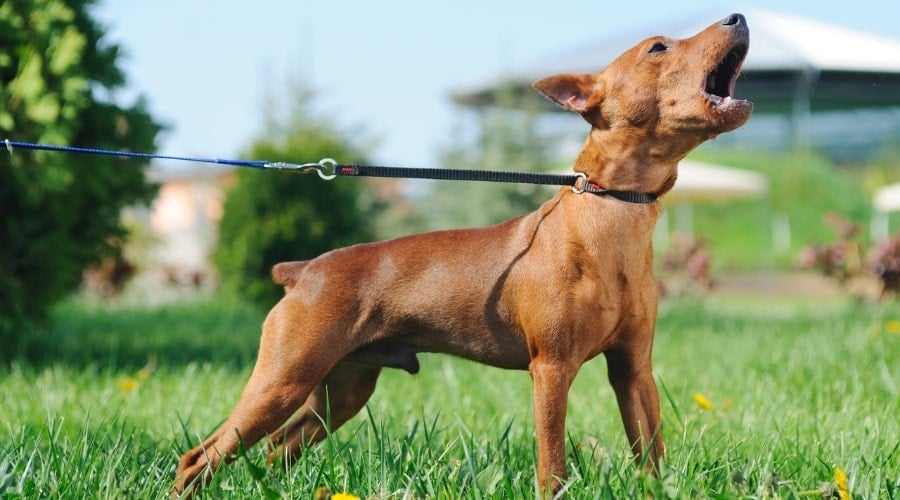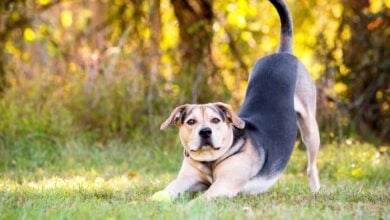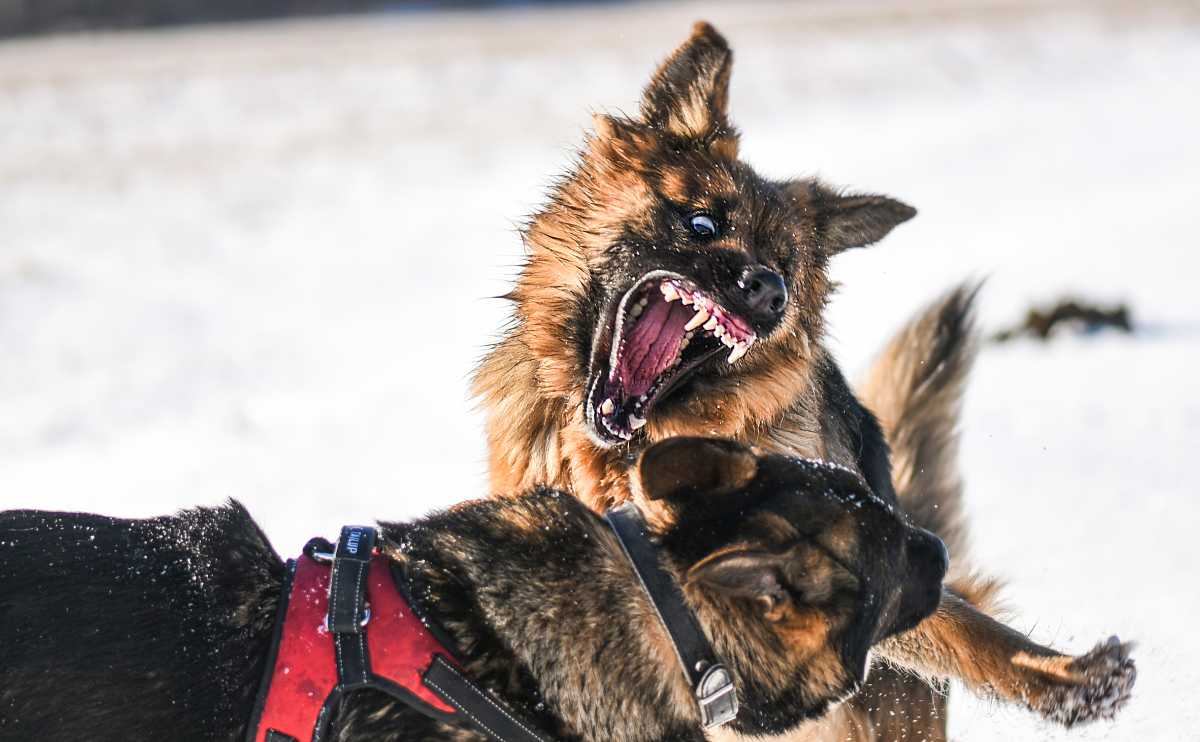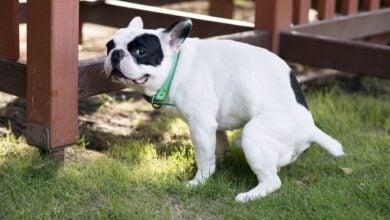Why Do Dogs Love Mud? 7 Filthy Facts That Explain Everything
When you purchase through links on our site, we may earn a commission. Here’s how it works.
You just spent $50 on grooming. Fifteen minutes later, your dog is proudly marinating in a mud puddle like it’s five-star luxury. Why do they do this? And why do dogs love mud so much?
Table of Contents
Is it rebellion? A secret dog ritual? Pure chaos? I dug into the dirt (literally and scientifically) to find out. From cooling off like a swamp-dwelling genius to taste-testing nature’s weirdest buffet, these seven filthy facts will finally explain your dog’s obsession and maybe make you laugh (or gag).
Stick around till the end, where I’ll share three clever tricks to stop the madness without ruining their fun.
Why Do Dogs Love Mud? 7 Filthy Reasons
Dogs don’t just roll in mud to make your life harder (although… bonus perk?). There’s real, instinctual dog logic behind their messy obsession. And some of it is surprisingly smart, totally gross, and honestly kind of hilarious.
Here’s what’s really going on when your pup dives headfirst into a puddle like it’s their favorite place on Earth.
1. It Feels Freaking Amazing
Let’s be honest: mud feels kind of great. Cold, squishy, and soothing on tired paws? Dogs are all in. That sloppy, goopy texture presses into their fur, belly, and skin in a way that just feels… right.
If you’ve ever seen your pup roll, wiggle, and flail with pure joy in a patch of mud, it’s not just chaos; it’s a full-body sensory delight. For dogs, mud isn’t gross. It’s comforting, like a weighted blanket made of filth.
This dog, Otis, isn’t just enjoying mud; he’s having a full-on spa day. Watch him vibe like he booked the deluxe package.
Basically:
- Mud feels good on hot paws and bellies
- Dogs enjoy the texture and pressure of rolling
- It’s a full-body stimulation party (and they’re always invited)
2. It Reminds Them Of Puddles & Playtime
For a dog, any wet spot signals fun, and if it happens to be dirty, sticky, and splatter-friendly? Even better.
Most dogs have happy memories associated with water, such as romping through sprinklers, wading through creeks, or chasing hoses in the yard. So when they spot a muddy patch, their play sensors go off like fireworks.
It’s not just a mess. It’s a nostalgia trip. A guaranteed good time. And they’re not thinking about your car seats when they cannonball into it.
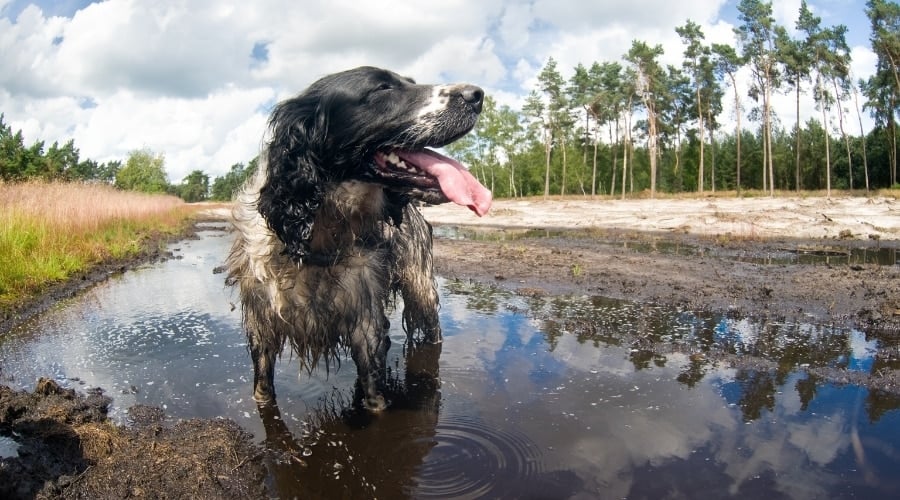
Quick takeaway:
- Mud = enhanced water fun
- Links to positive, playful memories
- It’s a free-for-all playground
3. They’re Masking Their Scent (Like Canine Spies)
Your dog isn’t just rolling in mud to annoy you, okay, maybe a little. But mainly, they’re going full undercover agents.
Some believe that a dog’s interest in mud may be tied to an ancient protection method. Wild dogs would often dig in the dirt or mud and then roll around in it to erase their scent, helping to conceal themselves from nearby enemies.
Dogs have scent glands and noses a thousand times more powerful than ours. So when they coat themselves in earthy funk, they’re doing what wild canines have always done: disguising their “dog” smell to sneak up on prey (or avoid becoming prey themselves).
It’s basically the canine version of putting on camo paint if that paint smelled like pond sludge and bad decisions.
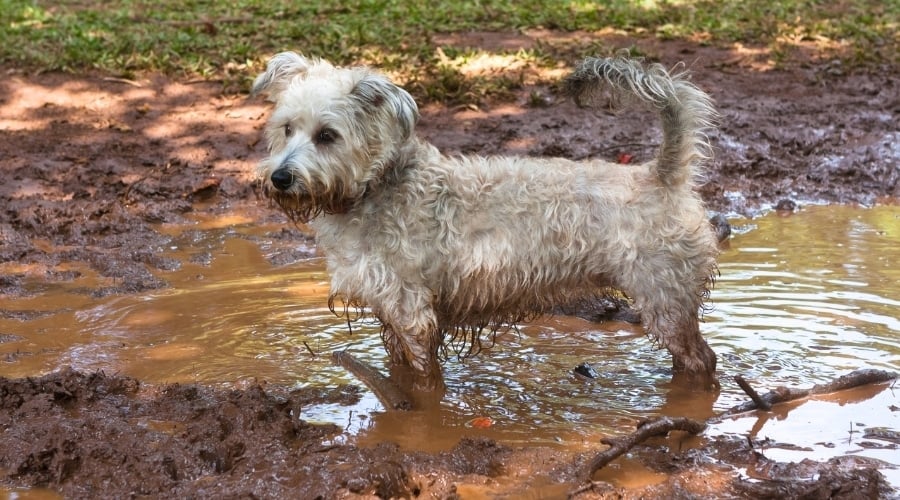
The love of mud may be ingrained in your dog’s DNA. Although our domesticated pups may no longer fend for themselves in the wild, they still exhibit some of the same behaviors, including a love of mud.
Mud play may be just as natural a behavior as barking is to our furry friends.
Overall:
- Rolling in mud (or worse) can mask your dog’s natural scent
- It’s an ancient survival trick from their wolf ancestors
- Gross = stealthy in the dog world
4. They Don’t Like How They Smell
You just gave your dog a bath. Lavender oatmeal shampoo. Warm towel. Maybe even a spritz of “apple blossom” cologne. They hate it.
To you, they smell amazing. To them, they smell like a scented candle that lost a fight with a bubble bath. Dogs don’t want to smell like flowers. They want to smell like themselves… or, better yet, like the backyard.
Rolling in mud is your dog’s way of hitting the “undo” button on your good intentions. It’s the ultimate post-grooming protest.
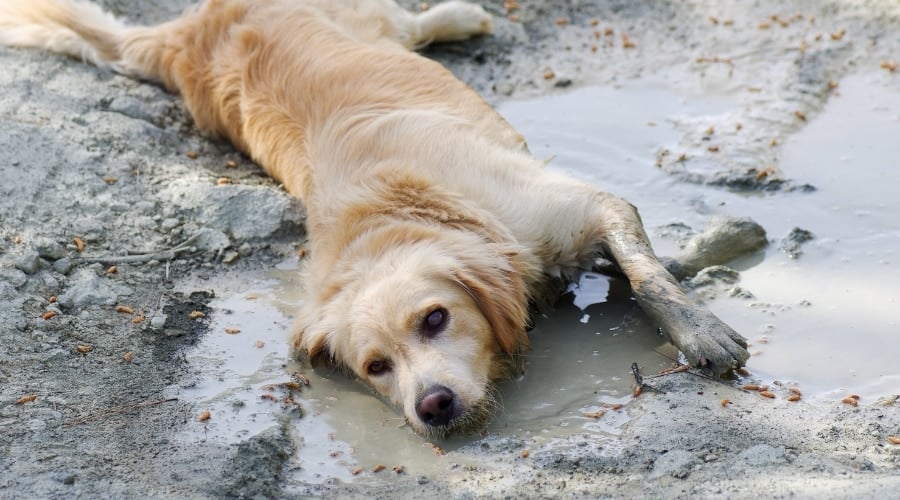
Does your dog run to the nearest mud pile each time they are bathed? If so, your pup may try to strip itself of any scents or fragrances from dog shampoo. Being covered in mud can help a dog feel as if they have removed any trace of ‘human fragrance’ and have restored their unique dog scent.
Quick takeaway:
- Dogs use scent for identity, and yours may hate “clean” smells
- Mud helps them return to a more natural, “doggier” odor
- This is less rebellion, more biological reset
5. Yep, Some Dogs Actually Like The Taste
I hate to be the one to tell you this… but some dogs think mud is delicious.
Technically, it’s called geophagia, the act of eating dirt, soil, or mud, and it is a form of pica. It might be for minerals, gut instinct, boredom, or just plain weird dog logic. And sometimes? That mud includes extras like worms, compost, or even poop. Sorry.
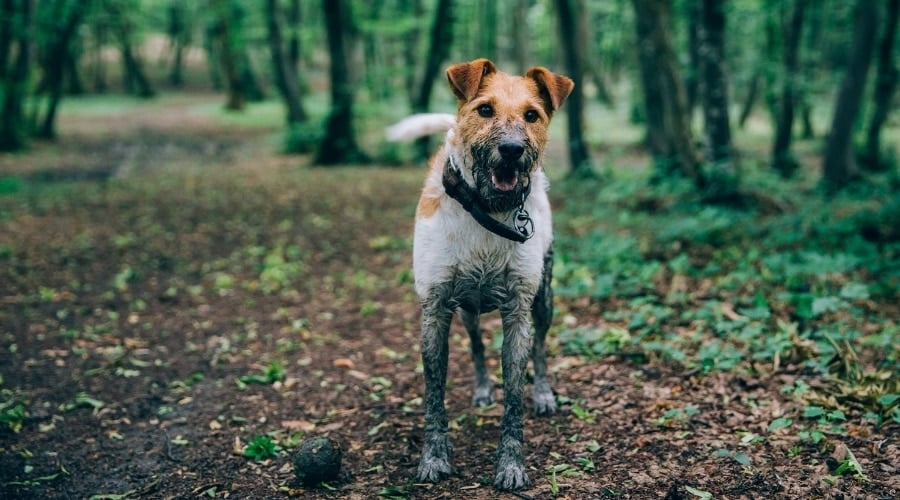
Dog reaction: “Nature’s smoothie. Want some?”
While it might seem disgusting, a little mud nibbling isn’t always dangerous. But if your pup is going full buffet, it’s worth asking your vet about potential deficiencies or gut issues.
So, I checked in with Dr. Amber LaRock, DVM, a licensed veterinary technician, to get the scoop on why some dogs treat mud like a snack.
Some dogs take it a step further by actually eating or drinking mud. Eating mud or dirt is fairly common in our canine friends and can range from harmless behavior to something more. While some dogs may simply enjoy the taste of mud, this behavior can point to underlying health conditions. Dogs that eat mud may struggle with canine anxiety, nausea, boredom, or even nutritional deficiencies.
If your pup suddenly starts snacking on mud or dirt, it’s best to visit your vet to rule out any complications. Even if this is a normal behavior your pup participates in, it’s important to note that mud can contain harmful bacteria and parasites that can cause your dog harm. While some dogs may enjoy eating mud, it is not a safe habit.
– Dr. Amber LaRock, DVM, Veterinarian Contributor to Canine Journal
Basically:
- Some dogs eat mud for minerals, texture, or just curiosity
- Could signal boredom, instinct, or rare nutritional gaps
- Watch for compulsive eating, but occasional licking is usually harmless
6. Mud = Instant A/C For Dogs
Mud isn’t just a mess. It’s a dog’s DIY air conditioning system. While we crank the AC or grab an iced coffee, dogs rely on dirt to beat the heat.
They don’t sweat the way we do. Instead, they release heat through their paw pads and belly. So when they belly-flop into a puddle of cold, sloppy mud, they’re not being dramatic. They’re being efficient.
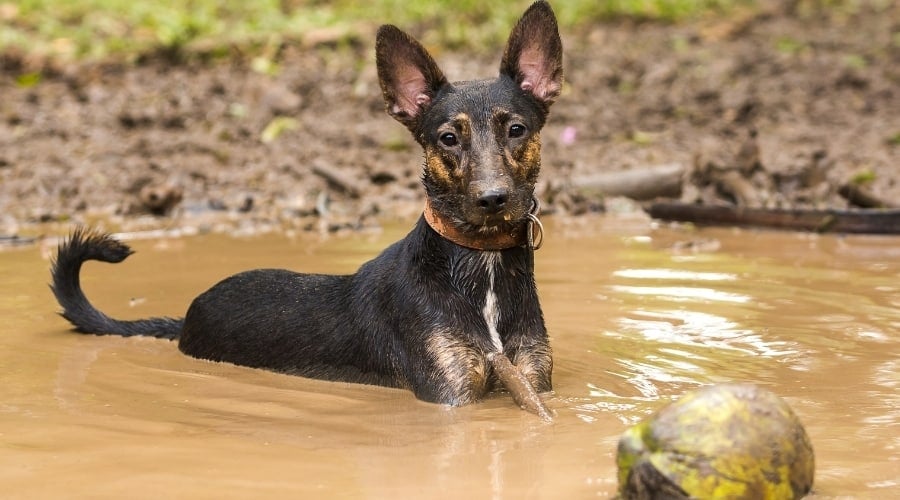
And honestly? It works. Wet mud cools the skin better than dry dirt, and it sticks around long enough to keep their body temp down while they bask in swampy satisfaction.
Animals of all kinds turn to mud as a natural and effective tool for cooling off on a hot day. If your pup runs to the first mud puddle every time the temperature increases, this may be their way of cooling off in the summer heat.
Overall:
- Dogs use mud to cool off, especially via their paws and belly
- It’s instinctual and surprisingly effective
- That “why?!” moment is probably just heat relief in action
7. Mud Is Just… Fun. Really Fun.
Sometimes, the answer to “Why do dogs love mud?” is simply because they love it.
Mud is messy. It’s chaotic. It makes that glorious splat sound when they leap into it, and that alone might be enough. Rolling, running, belly-sliding… It’s sensory overload in the best possible way for your dog.
Muddy playtime is just plain fun to some canine friends. It can make for an exciting afternoon for our pups, especially those who are especially fond of playing in the water.
If your pup immediately dives into the mud at each given chance, they may enjoy playing in it. There’s no survival strategy here. No primal throwback. Just unfiltered, muddy joy.
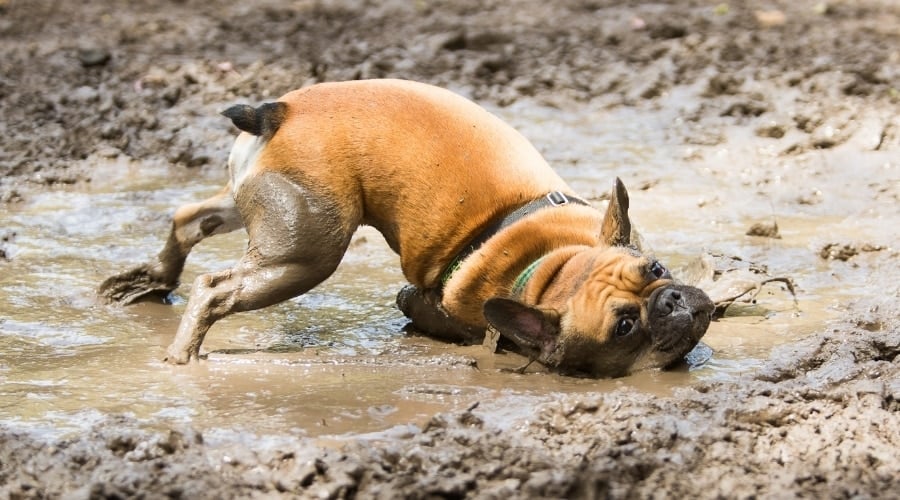
If you’ve ever seen your pup bounce through a puddle with their tongue flopping and eyes sparkling, you already know that mud is their playground, their amusement park, their dopamine delivery system.
Quick takeaway:
- Dogs love fun. Mud is fun. Math checks out.
- It’s stimulating, splashy, and lets them go full gremlin
- No deeper meaning, just pure, dirty delight
What Kind Of Dogs Love Mud The Most?
Some dogs treat mud like a five-star resort. Others won’t step in a puddle if you paid them in bacon. The difference? Breed, instincts, and personality.
Dogs bred for hunting, herding, or water work tend to go all-in on mud play. Why? Getting messy was part of the job, whether chasing game through swamps, herding through fields, or retrieving it in rivers.
Here are a few mud-loving breeds:
- Labrador Retrievers – Water lovers with zero fear of sludge
- Golden Retrievers – Joyful, splashy, and always up for a mess
- Newfoundlands – Giant, gentle, and practically designed to live in water
- Poodles – Originally bred as water retrievers—they get it!
- Beagles – Scent hounds that’ll dive nose-first into anything
- Terriers – Digging is in their DNA; mud just adds flavor
- Border Collies – High energy + zero fear = mud magnets
Not a fan of the filth? Some smaller breeds (like Bichons, Shih Tzus, or toy breeds) might avoid mud altogether. Unless peer pressure kicks in at the dog park.

Not every dog lives for mud. My English Bull Terrier mix, Bonkers, treats water like it’s lava. He’ll go out of his way to tiptoe around puddles. This photo of him with accidental mud “boots” is the muddiest I’ve ever seen him. He was horrified.
Overall:
- Working and sporting breeds are built for messy, fun
- Curious, energetic dogs are most likely to dive in
- Some dogs just really like watching you mop
Is Mud Dangerous For Dogs?
Mud play is usually harmless and pretty messy. But not all mud is created equal, and some puddles hide more than just fun. Depending on where your dog is romping, mud can carry risks like:
- Toxic chemicals from runoff or pesticides
- Parasites like Giardia or hookworms
- Sharp debris like glass, nails, or sticks
- Mold or bacteria in stagnant, swampy areas
And while most dogs have tough immune systems, minor cuts from rocks or sticks in the mud can lead to infection if not rinsed clean.
⚠️ Watch Out For:
- Mud near roads, farms, or industrial areas
- Foul-smelling puddles (sulfur = bacteria)
- Dogs drinking muddy water
Quick takeaway:
- Mud in clean, natural areas? Usually fine.
- Mystery puddles near roads or chemicals? Best avoided.
- Always rinse your dog after muddy play, and check paws for cuts
How To Clean A Muddy Dog Fast: 4 Steps
Your dog’s face says, “Best day ever.” Their legs say “biohazard.” And now they’re marching straight toward your rug with swamp paws and zero shame.
Don’t panic. Here’s how to clean them up quickly without trashing your floors, patience, or towels.
Step 1: Set Up a Mud Stop Zone
Create a cleanup station near your entryway with towels, paw wipes, and a water bottle or small rinse bucket. A cheap boot tray or rubber mat can catch the first wave of mess before it hits your floor.
Step 2: Attack the Filth Zones
Start with the paws, belly, and tail, mud’s favorite hiding spots. Rinse with warm water, gently scrub between toes, and wipe down their undercarriage. Keep some treats close by. This isn’t their favorite activity, but you can fake your way through it together.
Step 3: Shampoo Only If You Must
If they smell like something that faked its own death in a swamp, break out the gentle dog shampoo. Otherwise, water and a thorough rinse usually do the trick.
Skip anything overly perfumed. Your dog’s just going to roll it off in the following mud patch anyway.
Step 4: Dry Like You Mean It
Wet dog + fabric = disaster.
Towel-dry thoroughly, especially around their paws and belly. For thicker-coated dogs, a cool blow dryer or pet dryer speeds up the process and keeps the damp dog smell from settling in.
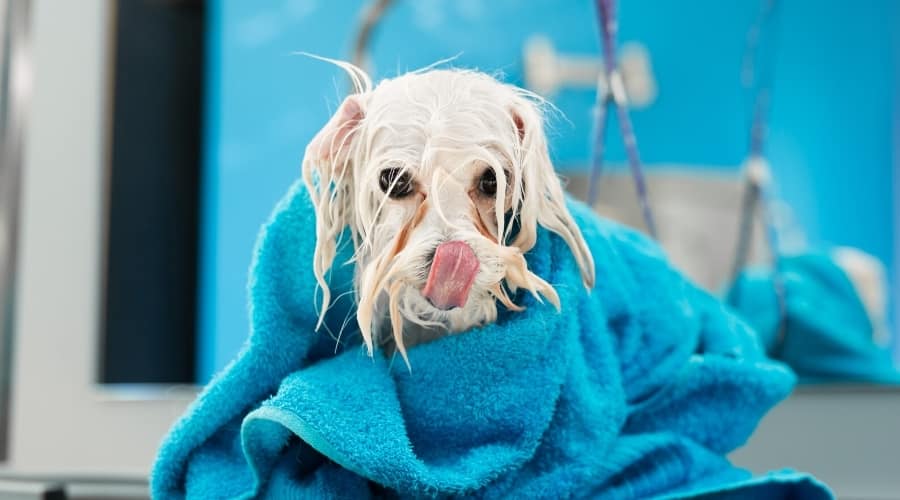
Pro Tip: Train your dog to tolerate cleanup with praise and treats. If you act like it’s no big deal, they might eventually agree.
3 Smart Tricks To Keep Your Dog Out Of The Mud
Love your dog. Hate the cleanup? Constantly bathing your pup after each muddy adventure can get old fast, as well as the trail of dirt they may track into your home.
Here are three simple strategies to help you dodge daily disasters without ruining their muddy fun forever.
1. Keep Them Leashed During & After Rain
If you know your dog’s a certified mud missile, use a short leash near puddle-prone areas. Keeping them on a leash will allow you to control their movements throughout your yard, pulling them away from any especially muddy spots.
This may take a bit of extra time out of your day, but it is a way to keep stubborn pups clean. It gives you a fighting chance to steer clear.
2. Distract With A Toy Or Treat
Right before they make a beeline for that puddle, call their name and toss a favorite toy or high-value treat. Timing is everything, and it’s crucial to interrupt the urge before splashdown.
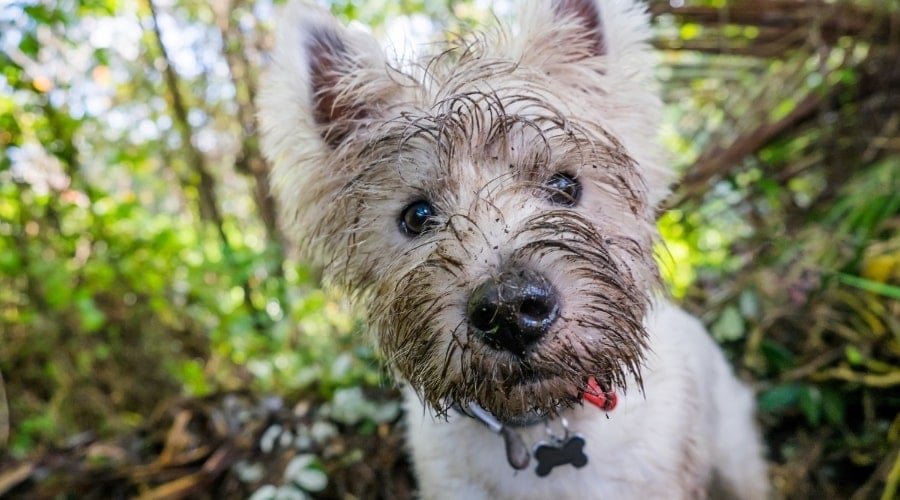
3. Practice the “Leave It” Command
Train your dog to respond to “leave it,” not just with socks or snacks but with mud as well. Start in clean areas, then level up near dirt traps.
Use positive reinforcement methods to teach them to avoid mud puddles. You can do this by using a sharp sound each time your dog approaches a puddle and only reward them if they successfully refrain from entering it.
You can also walk away from your pup any time they dive into a puddle, teaching them that jumping in the puddle results in pulling all attention away. Training can take time, but it is often successful with consistency.
Pro Tip: Don’t punish them for mud. Redirect with energy and rewards. They’re just being dogs (super messy ones).
Curious What Else Your Dog’s Up To?
If rolling in mud isn’t the weirdest thing your dog does, you’re not alone. Our furry friends have a full menu of behaviors that leave us scratching our heads (and sometimes holding our noses).
Ever wonder why dogs love sniffing crotches at the worst possible moments? It’s less creepy than it seems. Blame pheromones, not poor manners. Or how about poop-eating? Yep, it’s a thing (called coprophagia), and no, it doesn’t mean your dog is defective. Just… adventurous.
And if you’ve seen your pup proudly roll in another animal’s droppings, that instinct, like rolling in mud, actually traces back to their wild roots. Lastly, there’s the infamous butt scoot across the carpet. It might look hilarious, but it usually signals something your vet needs to check, namely, their anal glands.
Got a Mud Monster at Home? We want to hear your best (or worst) muddy dog moments! Drop your story in the comments, bonus points for chaos, ruined carpets, or public embarrassment. Let’s commiserate.
